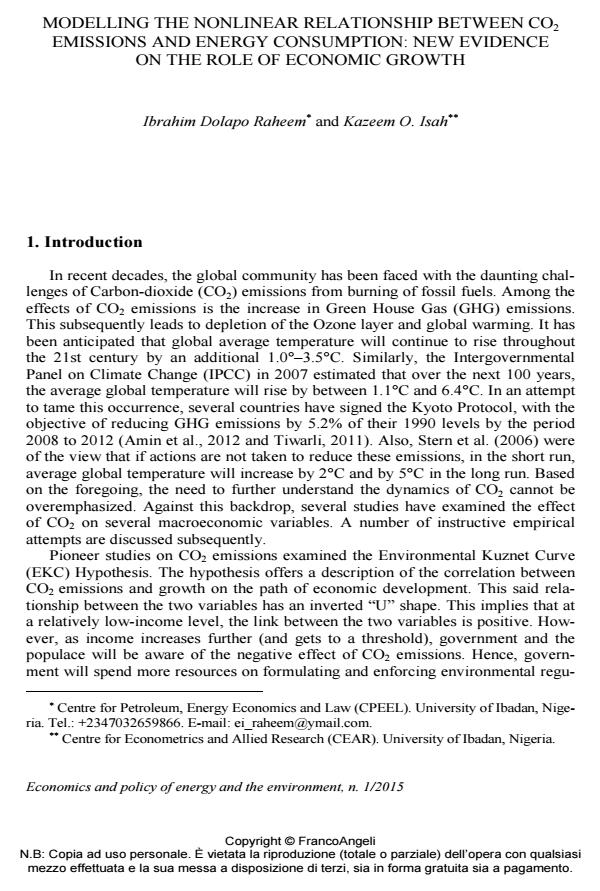Modelling the nonlinear relationship between co2 emissions and energy consumption: new evidence on the role of economic growth
Journal title ECONOMICS AND POLICY OF ENERGY AND THE ENVIRONMENT
Author/s Raheem Ibrahim Dolapo, Kazeem O. Isah
Publishing Year 2016 Issue 2015/1
Language English Pages 12 P. 59-70 File size 178 KB
DOI 10.3280/EFE2015-001005
DOI is like a bar code for intellectual property: to have more infomation
click here
Below, you can see the article first page
If you want to buy this article in PDF format, you can do it, following the instructions to buy download credits

FrancoAngeli is member of Publishers International Linking Association, Inc (PILA), a not-for-profit association which run the CrossRef service enabling links to and from online scholarly content.
The objective of this study is to examine the relationship between CO2 emissions and energy consumption while simultaneously accounting for the role of economic growth. Although a few recent studies have paid attention to the nonlinear relationship between the first two variables, no study that we are aware of, has considered these three variables simultaneously. Using data covering 21 countries for the period 1986-2010, the study found the existence of one threshold level of economic growth, which stood at 5.5 percent. It was also found that above this threshold level, CO2 emissions impact more on energy consumption and vice-versa. Policy implication is drawn from these results.
Keywords: Carbon dioxide emissions, economic growth, energy consumption, and dynamic panel threshold model
Jel codes: C23, O10, Q41, Q53
- Energy, transport, pollution and natural resources: Key elements in ecological taxation Elena Villar-Rubio, María Dolores Huete Morales, in ECONOMICS AND POLICY OF ENERGY AND THE ENVIRONMENT 1/2017 pp.111
DOI: 10.3280/EFE2016-001006
Raheem Ibrahim Dolapo, Kazeem O. Isah, Modelling the nonlinear relationship between co2 emissions and energy consumption: new evidence on the role of economic growth in "ECONOMICS AND POLICY OF ENERGY AND THE ENVIRONMENT" 1/2015, pp 59-70, DOI: 10.3280/EFE2015-001005